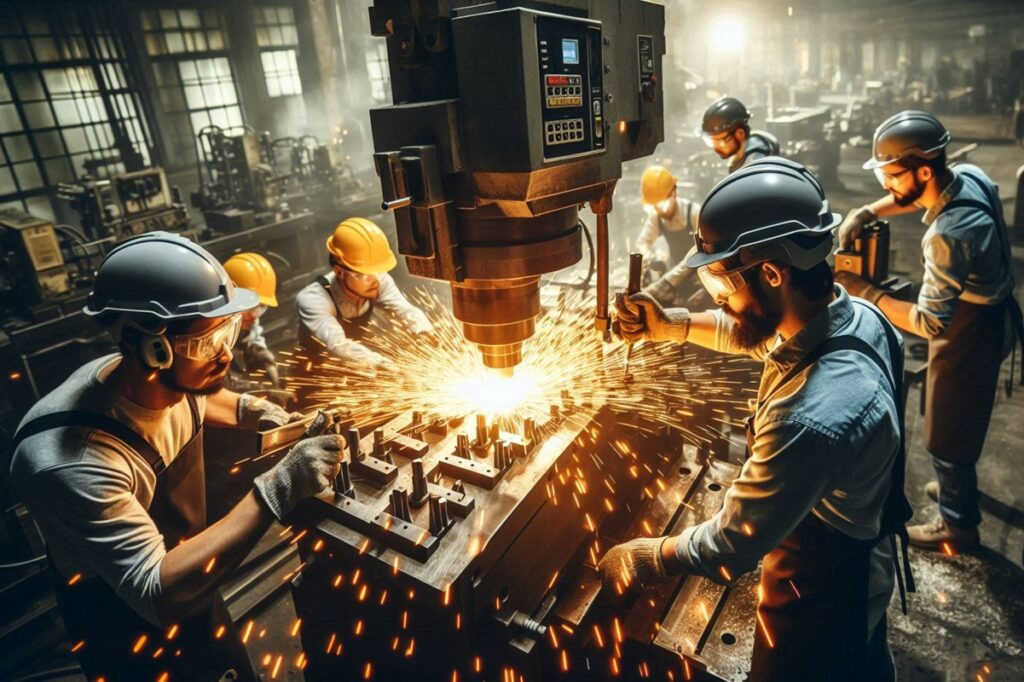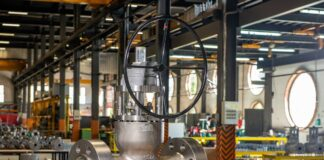Optimizing forging machining processes enhances efficiency, reduces expenses, and offers standard metal parts.
In metal part manufacturing, forging machining is essential. It requires precision, efficiency, and strategic planning to maximize productivity and minimize cost. Optimizing the workflow in forging machining would improve the entire process of production, which, in turn, assures higher profitability.
The strategies toward optimizing the workflows in forging machining are discussed below. These strategies save time and costs but achieve further improvements in terms of product quality and efficiency levels.
Understanding the Importance of Workflow Optimization
Streamlined workflow is the key for inexpensive production. The smoother the processes, the more business produces and the fewer resources it wastes.

The goal of workflow optimization in forging machining is to make each step of the cycle the best that it can be. This means a reduction in downtime, minimal loss of material waste, and being able to meet very tight standards of quality.
Also Read: Top 10 Forging Manufacturing Companies in India
The Need for Efficiency
Efficiency is the backbone of any successful manufacturing process. Forging machining attains efficiency when maximum numbers of machines work on maximum productiveness and so do the employees. Optimally optimized workflow prevents bottlenecks and delays, thereby decreasing overall production time.
It minimizes the production of waste materials. Optimization of workflows leads to minimum production of waste materials. Better utilisation of materials leads to reduction in costs and improves the competitiveness of companies. Material efficiency also supports sustainability goals because it means that businesses will be able to produce more while using less.
Streamlining the Production Process
Each stage of forging machining, from preparation of raw materials to finishing the final product, is comprised in forging machining. Improving each one of them is a need for achieving optimal workflow in every business. The process of production given above economizes on the time of every individual to complete the given task and achieves the most cost-effective way of production.
Also Read: All About Forging Foundry: Processes, Tools, and Industry Insights
Efficient Material Handling
Implement optimal flow of workflow in terms of improving material handling. Proper material handling minimizes time lost in transporting and storing materials. Because materials are kept relatively close to production stations, manufacturing will save the time it would otherwise consume transporting materials from one stage to another.
Besides, automated material handling systems can also do further optimization. It expeditiously and accurately moves materials, thereby the production pace, and there is less chance of human error, meaning that the materials shall get to the right machines with no delay.
Reducing Setup Time
Setup time is one element that would likely affect productivity throughout the setups. Optimization of workflow in businesses should, therefore, reduce the time taken to prepare a machine and other equipment for work. Standardized setups of similar machines are a means through which this can be achieved; the faster it will be to move from one job to the next for the workers.
Another method is the advanced quick-change tooling systems, where actual changeovers take place between production runs quickly. Downtime is reduced to its minimum and maximizes the machine.
Also Read: Forging Machining Processes: Key Techniques for Enhanced Durability
Implementing Automation and Technology
Automation is the best possible workflow optimizer for forging machining, as it can reduce manual labour, minimize error cases, and streamline the overall production speed of any business. High technology also provides more valuable insights in the manufacturing process to make data-driven decisions.
Robotics and Automated Systems
Robotics in forging machining is becoming increasingly common. Routine work such as material loading/unloading or part inspection can be handled by robots. Robots work much faster and with higher accuracy than human workers, which increases efficiency.
In addition, robots minimize workplace injuries because dangerous tasks are performed by them. Automation of such activities enhances safety as well as productivity, thereby ensuring cost-effective production.
Data Analytics for Process Optimization
Another relevant tool for optimizing workflow is data analytics. Analyzing the production data will assist companies in finding those inefficiencies in their processes. Data-driven insights can help the business make informed decisions for increasing speed in production, minimizing waste, and lowering their costs.
Real-time data tracking also allows businesses to track how their machines are performing. If a machine is not performing at maximum output, then it can be fixed and adjusted to perform at the best possible productivity level. This reduces downtime and keeps the manufacturing line churning with minimal to no losses.
Also Read: Latest Trends & Innovations in Forging Machining
Training and Skill Development
A well-trained workforce will certainly help optimize the workflow in forging machining. Their proper and efficient operation will ensure that machines run flawlessly, but along with them, one must take proper care of the material as well to avoid the risk of error generation.
Business firms, through investment in employee training and skill development, can improve the productivity of the business house and may improve their workflow.
Importance of Employee Training
Better working knowledge will be accomplished when the workers are well trained on operations and procedures of the machines and equipment. Well-trained workers can execute such tasks with higher speed and accuracy. Thus, less repetition of errors, less material wasted, and faster production result.
In addition, training is the general adaptation of modern technologies and methods for staff. Forged machine manufacturers have dedicated team of expert engineers who design and develop highly efficient, cutting-edge forging tools and machinery for ensuring precision forging process.
Continuous Improvement Programs in forging manufacturing unit
In addition to training, businesses should introduce and implement continuous improvement programs in forging manufacturing industries.
These would involve employees in identifying opportunities for the improvement of processes and would nurture a culture of continuous improvement, helping businesses optimize workflow regularly and stay ahead in the market.
Workers’ empowerment over the suggestion of improvement is typically brought by new ideas and insights from their side. Improving the workflow entails a high level of productivity and boosts employee morale.
Also Read: How Forging Machining Improves Metal Component Strength and Reliability
The Benefits of Workflow Optimization
Optimization of workflow in forging machining brings about a number of benefits. For one, it reduces the production time; hence, businesses complete more orders within a reduced period.
The second is that its production costs are significantly low since waste consumption is reduced and access to available resources is improved. It further increases the quality of the end products through efficient accuracy at any point of the process.
Increased Productivity
Workflow optimization increases efficiency by cutting the waste from the workflow. With optimized workflow, workers and machines will perform at their best, thereby producing more components in less time. This will usually mean more output and higher profitability for the business.
Reduced Costs
Reducing waste and improving efficiency save businesses a lot of money on their production costs. It provides optimized workflow in terms of much less material wastage, fewer errors, less time wastage, and all contributing to effective production.
Related: The Importance of Raw Material Selection in Forging foundry
Conclusion
Optimization of workflow in forging machining is important for producing at the lowest costs. By removing unnecessary activities in production, automating, and training the workforce, efficiency improves, along with cost savings.
Moreover, eradicating wastes and proper communication complement the optimization of workflow. All these factors result in higher-quality components as well as lower costs of production, thereby making it more profitable in such a competitive market.









